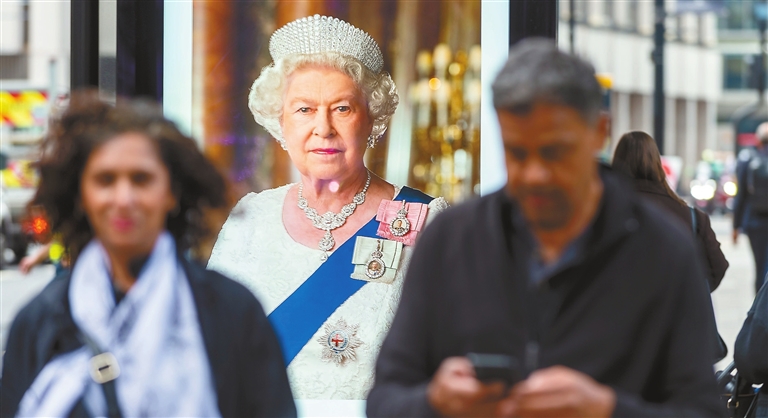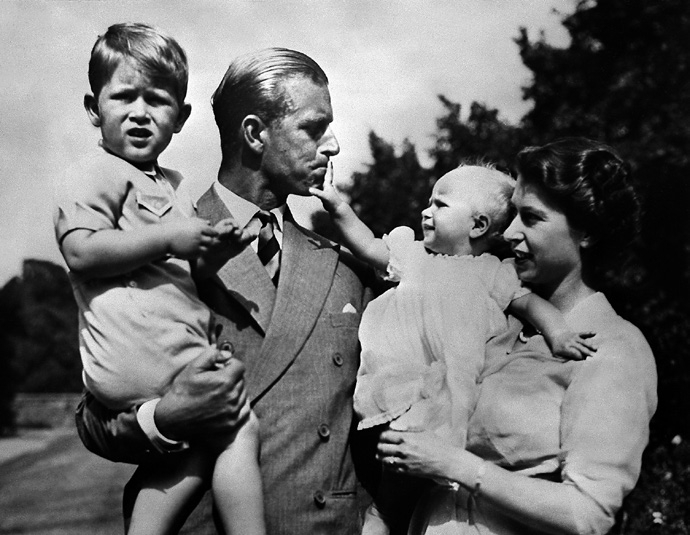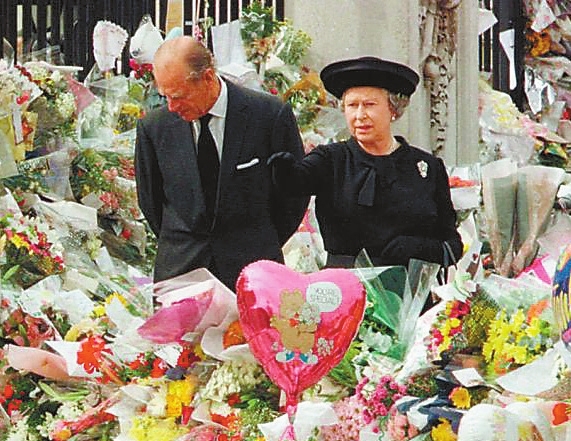


QUEEN Elizabeth II, the longest-reigning British monarch whose rule spanned seven decades, died Thursday at the age of 96, Buckingham Palace announced. The Queen’s funeral will be held next Monday, and it will be a public bank holiday. The Queen’s oldest son Charles has now become King Charles III. Her long reign saw Britain transformed from a war-weary declining imperial power into a modern multi-cultural state that rarely looked to its monarch for leadership, but still held her in high esteem. And while it witnessed its fair share of joy, Elizabeth’s rule also weathered many storms, both public and personal, as the monarchy tried to keep pace with changing times. Elizabeth Alexandra Mary was born in 1926, the first child of the Duke and Duchess of York. She didn’t become heir presumptive to the throne until 1937, when her father was crowned King George VI after the scandalous abdication of his older brother — events dramatized in the Oscar-winning film “The King’s Speech” and hit Netflix show “The Crown.” As World War II erupted, Elizabeth was quietly groomed for statehood. While living out the Blitz on London in nearby Windsor Castle, she was privately tutored in matters of constitution by Henry Marten, an eccentric yet respected teacher who reputedly kept a pet raven in his study. She began taking tentative steps into public life in 1940 when, aged 14, she made her first radio broadcast. At 16, she was made an honorary colonel of the Grenadier Guards, a British army infantry regiment. Wartime offered her certain freedoms beyond the traditional constraints of royal life. In 1945 she joined the Auxiliary Territorial Service and spent four weeks learning to drive and maintain military vehicles. When victory was declared in Europe, she mingled with jubilant crowds outside Buckingham Palace. Peacetime brought the return of Lieutenant Prince Philip of Greece and Denmark. The pair married in Westminster Abbey in 1947. Their first son Charles was born over a year later. With her father’s health in rapid decline, Elizabeth began accepting more official duties, taking his place at the annual “Trooping the Color” military parade in 1949. In 1952, while Elizabeth and Philip were on an official trip to Kenya, news came of her father’s death. She was now Queen. After her coronation in 1953, she embarked on numerous official overseas trips, oversaw state openings of parliament, welcomed visiting leaders such as Dwight Eisenhower, Charles de Gaulle and Soviet premier Nikita Khrushchev, and toured a coal mine. These international forays came even as the disintegration of Britain’s empire hastened. India had gained independence from its colonial power in 1947, before Elizabeth became Queen. Dozens more were to follow suit over the following decades, across Africa, Asia and the Caribbean. The Queen meanwhile embraced her role as Head of the Commonwealth, visiting almost all of its member states — starting with a lengthy Commonwealth tour in 1953 and 1954. In 1964, the Queen became a mother for the fourth time as new son Edward joined Charles and fellow siblings Anne and Andrew. There was, however, barely any letup in her busy schedule. By the arrival of her third decade on the throne, she was in her element. Prince Charles was embarking on a military career, and Princess Anne was married. The Queen continued to throw herself into public life, clocking up dozens of overseas tours and official visits around the U.K. There were family problems when her sister’s marriage collapsed, and constitutional issues as debate grew among Commonwealth countries about the role of the monarch, but these failed to dampen celebrations to mark the silver jubilee of her reign in 1977. Another royal wedding followed in 1981 when Prince Charles married Lady Diana Spencer at London’s St Paul’s Cathedral. Millions of people around the world watched the ceremony on television, unaware it would usher in the most turbulent period yet of the Queen’s life. The Queen’s 40th year on the throne, 1992, marked her lowest moment as three royal marriages fell apart. Princess Anne and Mark Philips divorced, Charles and Diana separated after claims of infidelities while Sarah Ferguson, Prince Andrew’s wife, was photographed topless with an American financial manager. To cap it all, a huge fire ripped through Windsor Castle, causing major structural damage. In the wake of the blaze, a furor broke out when it was suggested that public money be used to fund the restoration. These problems overshadowed the Queen as she made an historic visit to meet South African President Nelson Mandela in 1995, but criticism reached new heights in the wake of Diana’s death in 1997, when the royals were accused of being aloof and out of touch amid widespread public outpourings of grief. After days of silence, the Queen talked to mourners and admitted there were lessons to be learned from Diana’s life. The gestures struck a chord with the public and criticism ebbed away. After Diana, the Queen’s popularity rebounded as she presided over what appeared to be a softer, more accessible and modern royal family. This was evident in 2005 when she assented to the previously unthinkable marriage of Prince Charles and Camilla Parker Bowles. It was capped eight years later when Britain’s parliament ended the principle of men taking precedence over women in the line of succession to the throne. She witnessed two of her grandsons, Princes William and Harry, graduate as military officers in 2006 and five years later oversaw the marriage of William and Catherine. She also attended the wedding of Harry to Meghan Markle at St. George’s Chapel, Windsor in May 2018. In 2012, the Queen’s diamond jubilee was celebrated around the Commonwealth. Three years later, she surpassed Queen Victoria’s 63-year-rule to become the longest-reigning British monarch and, in 2016, she marked her 90th birthday. In February 2022, she marked the start of her platinum jubilee year, as she became the first British monarch to reign for 70 years. The Queen’s final years were punctuated by challenges as well as celebrations. In 2020, she gave two televised addresses in quick succession, one calling for unity in the face of the COVID-19 pandemic and the other, amid a national lockdown, to mark the 75th anniversary of VE Day. But while rallying the nation’s spirits, the Queen was facing upheaval within her own family. Less than two years after their wedding, Harry and Meghan announced that they were stepping back from their roles as senior royals and leaving Britain. They subsequently set up home with son Archie in California and, in a March 2021 interview with Oprah Winfrey, accused “the firm” of leaving Meghan unprotected against racist abuse and unfair media coverage. The couple also made a damaging allegation of racism by an unnamed member of the royal family. Meanwhile, Prince Andrew had been forced to step back from public duties after a disastrous 2019 interview with the BBC over his association with sex offender and disgraced financier Jeffrey Epstein. Later, Andrew settled a civil sex abuse lawsuit out of court for an undisclosed figure and continues to reject the allegations against him. In April 2021, the Queen suffered the loss of Prince Philip, her husband of 73 years. On Tuesday, she met with outgoing Prime Minister Boris Johnson and his successor, Liz Truss, at Balmoral Castle in Scotland, rather than traveling to Buckingham Palace to do so. By the time of her death in September, she had reigned for a little over 70 years — a constant, if regally distant, presence in the lives of several generations of Britons. (SD-Agencies) | 
